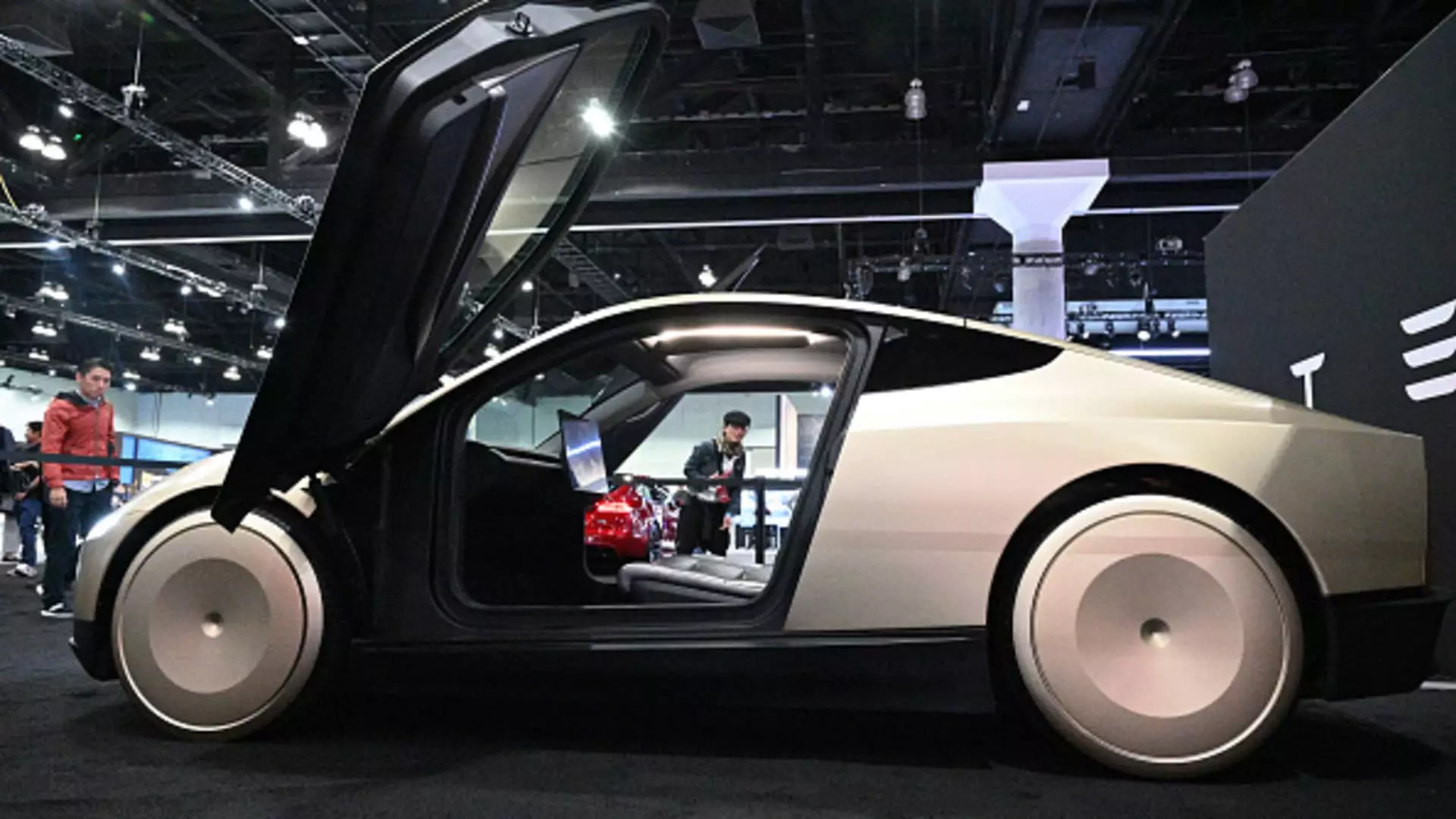California’s proposed regulations surrounding self-driving vehicles mark a crucial pivot in an industry frequently characterized by exuberance outpacing safety protocols. As we stand on the precipice of an autonomous revolution, it becomes increasingly evident that unyielding oversight is not only important but essential for public welfare. While technological innovation promises to usher in a new era of transportation, unchecked advancements risk overwhelming the very fabric of our societal norms. The California Department of Motor Vehicles (DMV) has unveiled ambitious and comprehensive rules aiming to regulate everything from casual robotaxis to heavy-duty driverless trucks. Skepticism abounds, however, particularly with companies like Tesla, which continues to grapple with the gap between ambition and reality in autonomous travel.
Dream vs. Reality: Tesla’s Shortcomings
Elon Musk’s Tesla has been a juggernaut of innovation, but it is crucial to scrutinize the gaps between its promises and achievements. Despite boasting a self-driving capability that it has heavily marketed, the reality is that the company has yet to secure the necessary permits for deploying such vehicles in California. This illustrates a worrisome disconnect. How can a company so entrenched in technological promises continue to operate without robust regulatory support to validate its claims? Investors may be riding high on speculative confidence, as shown by Tesla shares rising 10%. Still, what are they banking on? The acceptance of a vehicle that operating under the pretense of autonomy while requiring human oversight at a moment’s notice begs deeper questions regarding consumer safety and accountability.
Threats to Public Trust and Safety
Moving beyond shiny marketing and promising prototypes, the stakes involving public safety cannot be overstated. The fundamental principles of good governance dictate that the government, in partnership with industry leaders, must step in decisively to regulate these transformative technologies. With new regulations offering stricter guidelines for testing and deploying autonomous vehicles, California is taking an essential step forward. The requirement for permits for not only testing but also for deploying vehicles without human operators ensures a standard that might protect the general public from a burgeoning unknown.
Moreover, the stipulations that demand compliance with standards for vehicle interactions with first responders are indispensable. A scenario where an autonomous vehicle encounters an emergency situation without a tested response protocol spells disaster, highlighting the necessity of insisting on these precautions that may have been overlooked in previous discussions.
Innovation in the Face of Ethical Dilemmas
Although the push for regulatory compliance is essential, the context in which autonomous vehicles are deployed presents ethical dilemmas that neither policymakers nor manufacturers can ignore. As we bravely tread into a world where machines might make life-and-death decisions, the ethical frameworks that guide these technologies must evolve concurrently. For instance, algorithms dictating how an autonomous vehicle responds in an unavoidable crash scenario tug at the core of moral philosophy and legislation. How do we ensure that humans remain at the helm, ethically speaking, when we entrust life-altering decisions to sensors and codes?
In a landscape where companies like Waymo and Zoox have already gained advanced permits and are operating services in major urban centers, California’s bold regulations may represent a necessary antidote for a sector flirtatiously teetering on the edge of chaos. The regulations aim not just for compliance but for an empowered public, inculcating a sense of safety in the heart of this rapid technological evolution.
The Future of Autonomous Vehicles
Looking ahead, the trajectory for autonomous vehicles appears bright. With the immediate implementation of the suggested regulations, we can hope for a more sustainable and responsible framework within which these machines can operate. As California lays down the groundwork for comprehensive oversight, it sets an example for others. If companies are willing to play by the rules, they will ultimately contribute to a landscape that values safety and innovation in equal measure.
With heightened scrutiny and mandatory compliance, innovators may have to temper their exuberance to align their aspirations with grounded realities. California’s regulatory environment may serve as much as a blessing as it is a challenge, ensuring that as we race toward a new future, our path remains dictated by responsibility, accountability, and, above all, public trust.


Leave a Reply